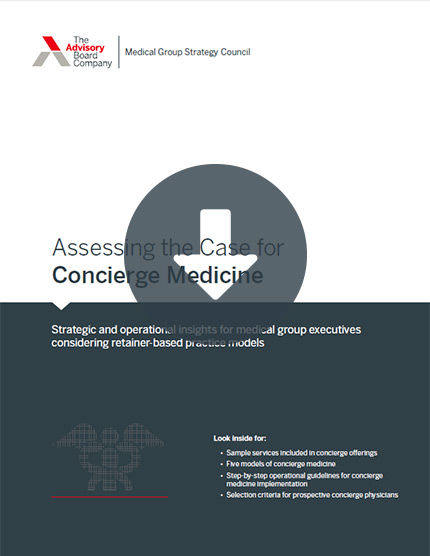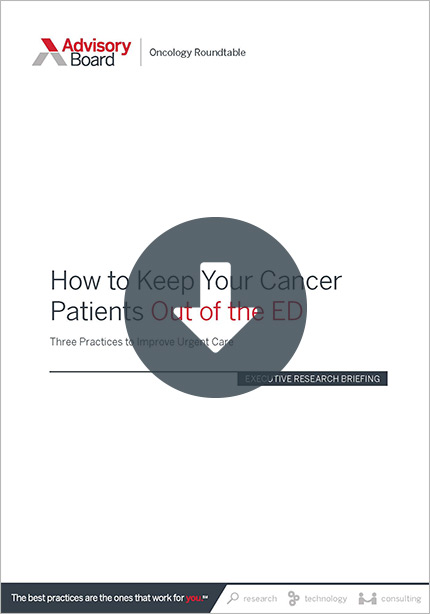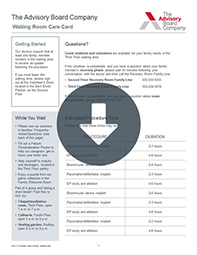Auto logout in seconds.
Continue LogoutConcierge medicine is a growing trend among independent physicians and a few hospitals, but now some individuals and companies are taking the trend a step further, opening "concierge emergency rooms" to provide "better, faster care"—for a price, Paul Sullivan writes for the New York Times' "Your Money."
Here's how you can improve patient experience with a customizable waiting room care card
Background
According to Sullivan, the concept of concierge medicine "has been around for decades." Concierge physicians bypass insurers, charging patients directly via annual membership fees in return for "direct access and more time with a doctor," Sullivan writes. And some hospitals—including Mount Sinai Hospital, the Hospital for Special Surgery, and Weill Cornell Medicine—offer concierge services, primarily geared at "dignitaries, celebrities, and international patients paying their own way."
But EDs are obligated by law to treat the sickest patients first, Sullivan writes—and that means patients with less severe ailments are often kept waiting. For instance, research from ProPublica show patients seeking care at an ED in New York spend an average of three hours at the facility before being discharged.
Sullivan writes, "A lot of people are fed up with the process, but few can do anything about it." To address that market, some companies are opening concierge emergency facilities, often aimed at treating "clientele familiar with the costs and benefits of concierge medicine," Sullivan writes.
Priority Private Care
One concierge facility, Priority Private Care in New York, was opened by Bernard Kruger, an oncology and internal medicine physician, after he realized that the concierge medical practice he'd been running for 15 years wasn't able to accommodate all of his patients' needs, particularly if a patient was hurt on the weekend or required certain services, such as an X-ray or blood work.
At Priority, Kruger and his associates offer round-the-clock emergency care for an annual fee. The fee typically declines for every additional family member added to a members account. For instance, one patient currently pays $5,000 per year for his own membership, plus $3,000 for his wife's membership and $2,000 for his daughter's membership. Priority, which currently has about 1,100 members from 350 families, plans to cap its membership between 2,000 and 2,500, depending on how busy it gets.
Priority's facility is fully staffed with imaging machines and lab equipment that can get blood work results finished quickly. According to Kruger, "You get seen right away. You get treated right away. You have a consistent doctor with you."
But Priority can't do everything that a hospital ED can do, Sullivan writes. It's not a surgery center, nor is the facility equipped to handle gunshot wounds. According to Kruger and his co-founders, Primary aims to provide three main services:
- Emergency care: Priority believes it can handle around 80% of cases that require emergency care;
- Access to a network of specialists: Priority members have access to a number of specialists who can see them quickly, and—if hospital services are required—they facility provides the necessary medical connections to facilitate quick admittance; and
- Convenience for any ailment: According to Andrew Olanow, one of Priority's co-founders, "As long as we have to staff a full facility to effectively run empty, people can use us for convenience services"—including ailments as minor as a sore throat or irritating pimple.
According to Sullivan, there's also another key difference between Priority and the traditional ED: Priority is regulated as an urgent care facility, and therefore isn't obligated to take in any patient who walks through the doors—although Olanow said it would regardless. "If they're gushing blood, we'd stabilize them and walk them the one and a half blocks" to the nearest hospital, Olanow said.
Priority also offers free care to schoolchildren and teachers as part of its community outreach.
Other concierge EDs
Concierge emergency facilities have popped up in other states as well, Sullivan writes—including Texas, where the facilities are generally regulated as free-standing EDs. The facilities can often provide more attention and quicker care for patients, although, like Priority, they are not outfitted to handle certain emergency services; patients in need of surgery, for instance, will be transported to the nearest hospital.
Harvey Castro, a former ED physician who now serves as medical director of Coppell ER in Dallas, said of his practice, "I get to spoil my patients and go over every lab and sit with them. … We have extra staff who can go and walk a person's dog. We've picked up children at school." Though unlike most concierge programs Coppell ER doesn't charge a membership fee; rather, the facility bills insurers and collects ED payments, Sullivan writes (Sullivan, "Your Money," New York Times, 4/20).
How can you can improve patient experience? Download our waiting room care card
It’s tough to balance provider productivity and patient-centeredness, and the waiting room is one frequently overlooked opportunity to find equilibrium. By explaining what to expect during procedures, you can neutralize a major source of family anxiety and questions.
We've made it easy. Use our template to create a "waiting room care card" that addresses key family questions. Just drop in your logo and add your institution’s protocols. Save, print, and start improving your waiting room experience.
Don't miss out on the latest Advisory Board insights
Create your free account to access 1 resource, including the latest research and webinars.
Want access without creating an account?
You have 1 free members-only resource remaining this month.
1 free members-only resources remaining
1 free members-only resources remaining
You've reached your limit of free insights
Become a member to access all of Advisory Board's resources, events, and experts
Never miss out on the latest innovative health care content tailored to you.
Benefits include:
You've reached your limit of free insights
Become a member to access all of Advisory Board's resources, events, and experts
Never miss out on the latest innovative health care content tailored to you.
Benefits include:
This content is available through your Curated Research partnership with Advisory Board. Click on ‘view this resource’ to read the full piece
Email ask@advisory.com to learn more
Click on ‘Become a Member’ to learn about the benefits of a Full-Access partnership with Advisory Board
Never miss out on the latest innovative health care content tailored to you.
Benefits Include:
This is for members only. Learn more.
Click on ‘Become a Member’ to learn about the benefits of a Full-Access partnership with Advisory Board
Never miss out on the latest innovative health care content tailored to you.



